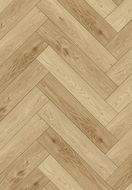
Underfloor heating is a solution that is becoming increasingly popular in modern homes and apartments. It provides thermal comfort, eliminates radiators, and allows for even heat distribution throughout the rooms. However, choosing the right flooring for this system raises many questions. A common dilemma: vinyl panels for underfloor heating or perhaps traditional ceramic tiles? In this article, we will explore why vinyl panels are considered an excellent choice for underfloor heating, their advantages, and what to pay attention to during installation.
What will you learn from this article?
- Why vinyl panels and underfloor heating are a good combination.
- What is involved in installing this type of construction.
- What vinyl panels offer for heating.
Why are vinyl panels and underfloor heating a perfect match?
Vinyl panels stand out from other flooring materials, such as ceramic tiles or wood, due to their thermal properties. The key feature of vinyl panels for underfloor heating is their low thermal resistance, which means that heat from the underfloor heating system passes through them quickly and efficiently. With vinyl panels, you don't have to worry about energy loss – the heat from the floor goes directly into the room, providing even heat distribution. This makes vinyl panels for underfloor heating not only practical but also economical.
Compared to ordinary panels for underfloor heating, such as laminated ones, vinyl panels for heating offer better thermal conductivity and greater resistance to moisture and temperature changes. Vinyl panels for underfloor heating are thus ideal for:
- kitchens,
- bathrooms,
- living rooms.
So everywhere where underfloor heating is often used. Vinyl floors do not deform from heat, which is a common problem with lower quality vinyl panels or traditional laminated panels.
Which vinyl panels to choose for underfloor heating?
When deciding on vinyl panels for underfloor heating, it is worth paying attention to a few key points.
- Vinyl panels should be marked by the manufacturer as compatible with underfloor heating. Vinyl for underfloor heating must have the appropriate thickness – usually between 2 and 6 mm – to maintain low thermal resistance. Floors that are too thick can block heat flow, reducing the efficiency of the system.
- The next question is: vinyl panels or ordinary ones? Ordinary panels for underfloor heating, such as laminates, may be cheaper, but their thermal conductivity is worse compared to vinyl panels. Vinyl panels for panels or vinyl panels for floor panels are a mistaken approach – they should not be installed on an existing floor if there is to be underfloor heating beneath, as the additional layer will increase thermal resistance. Instead, the installation of vinyl panels should be carried out directly on the screed with the heating system.
Installation of vinyl panels on underfloor heating
How to lay panels on underfloor heating? The installation of vinyl panels on underfloor heating requires proper subfloor preparation. The surface must be even, dry, and clean so that the vinyl panels for underfloor heating adhere well. In the case of a water-based underfloor heating system, it is necessary to make a self-leveling screed to ensure stability. The installation of vinyl panels on underfloor heating can be done with glue or in a click system, depending on the model of vinyl panels.
It is also important to turn on the underfloor heating for a few days before installing the panels, allowing the subfloor to stabilize. The system temperature should not exceed 27-28°C on the floor surface, which corresponds to roughly 60-80 W/m² of heating power. How many watts per m2 of underfloor heating do you need? It depends on the building's insulation, but in a well-insulated house, 60 W/m² is usually sufficient.
Advantages of vinyl panels for underfloor heating
Vinyl panels for underfloor heating have many advantages that make them a better choice than other materials.
- Vinyl panels for underfloor heating are waterproof, which is crucial in rooms exposed to moisture, such as bathrooms.
- Their flexibility and durability mean that vinyl floors handle temperature changes generated by underfloor heating well. Unlike wood, vinyl panels do not crack or warp from heat.
- Another advantage is the comfort of use. Vinyl panels create a pleasant-to-touch surface that remains warm even on winter days. Compared to cold ceramic tiles, vinyl panels for underfloor heating offer softness and comfort, which families with children will especially appreciate.
User reviews of vinyl panels for underfloor heating confirm that this solution combines aesthetics with functionality – the floor looks modern, and the heat spreads evenly.
Do vinyl panels have drawbacks when combined with underfloor heating?
Although vinyl panels for underfloor heating are very practical, they have some limitations. In the case of low-quality vinyl panels, harmful substances may be released under the influence of high temperatures of underfloor heating. Therefore, it is worth choosing vinyl for underfloor heating from reputable manufacturers who guarantee safety and quality. Vinyl panels for underfloor heating also require precise installation – with subfloor unevenness potentially affecting the system's efficiency.
Another aspect is the need to control the power of underfloor heating. Vinyl panels for heating should not be exposed to excessively high temperatures, which could damage them. In practice, however, modern underfloor heating systems are equipped with regulators that maintain optimal conditions for vinyl floors.
Is it worth choosing vinyl panels for underfloor heating?
This combination is gaining more and more supporters. Vinyl panels for underfloor heating offer low thermal resistance, water resistance, and an aesthetic appearance, making them a great alternative to ceramic tiles. Vinyl for underfloor heating is easy to install, durable, and ensures even heat distribution, which enhances living comfort.
If you're wondering whether to choose vinyl panels for underfloor heating, user and expert opinions agree – this solution will work in most homes. The installation of vinyl panels on underfloor heating is simple, as long as you follow the manufacturer's recommendations. Vinyl floors combined with underfloor heating are an investment in comfort and modern design that will revolutionize your interior. Choose vinyl panels for underfloor heating and enjoy warm, stylish floors for years! And earlier take a look at our blog to read about how to design a small bathroom with a bathtub.























